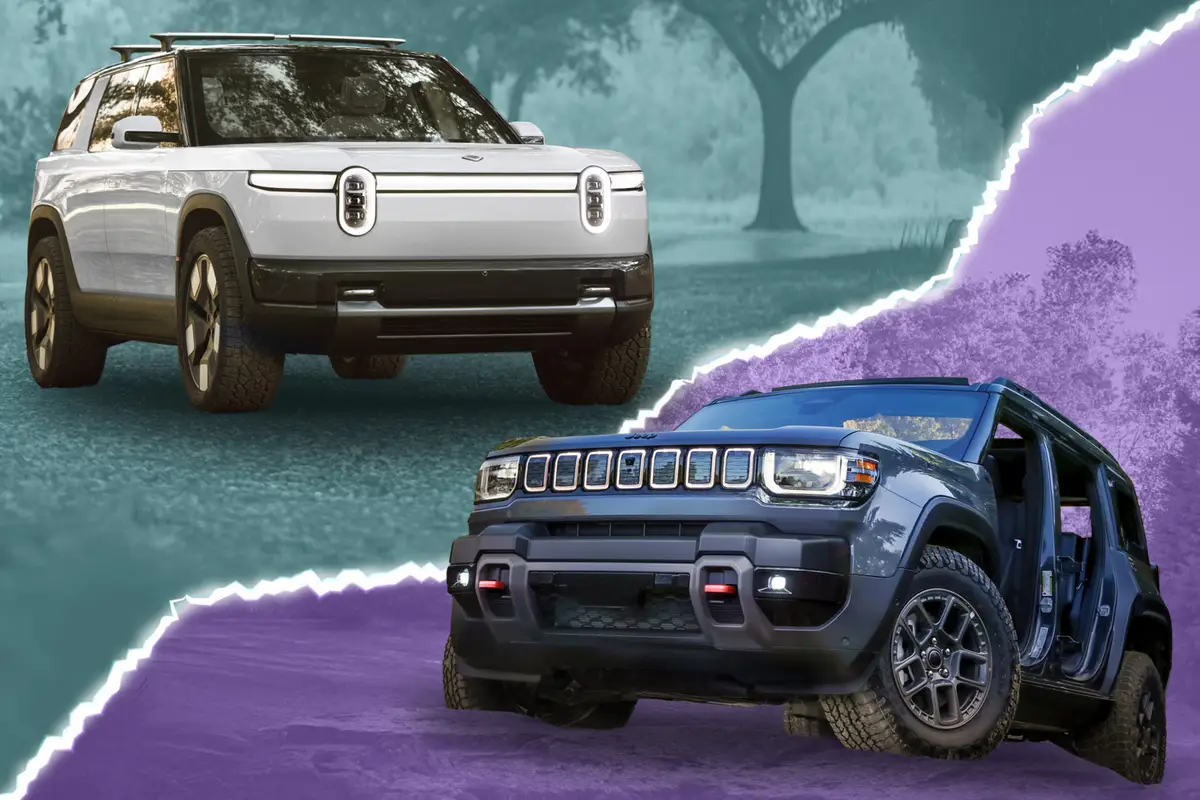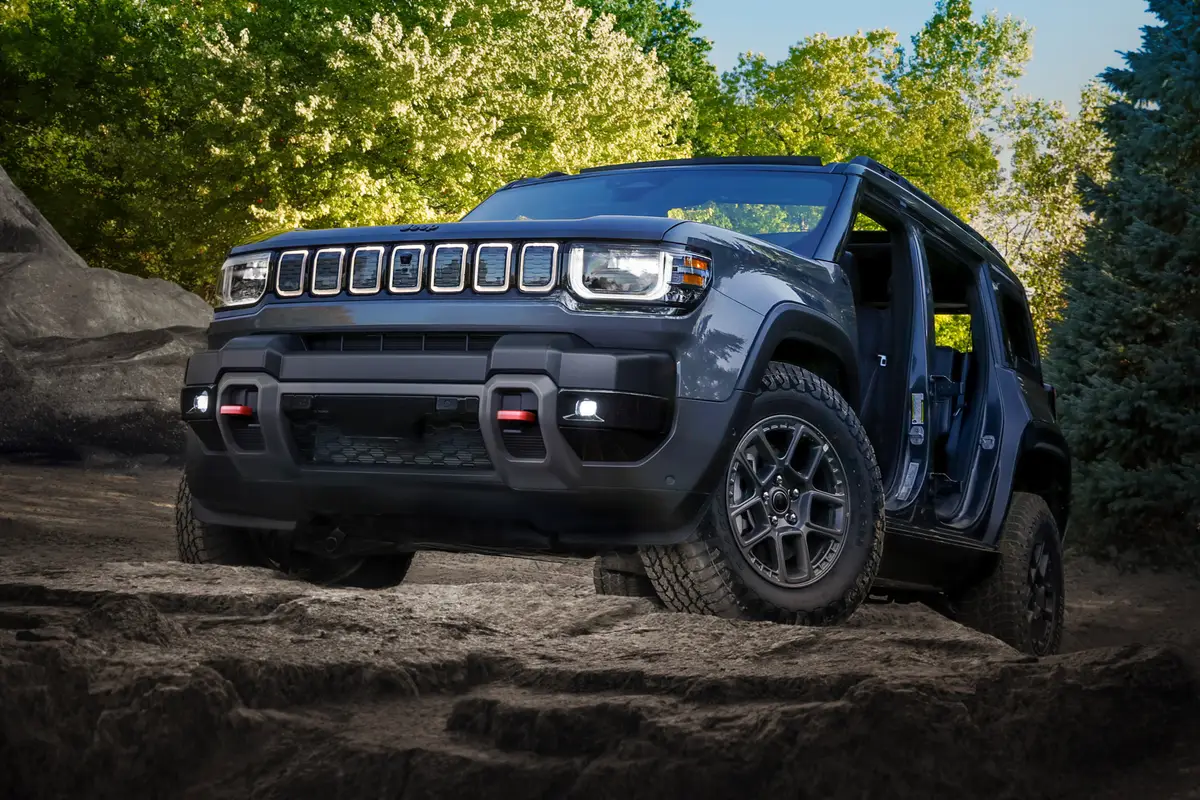2025 Cadillac Escalade V Review: New Screens, Less Filling, Still Loud

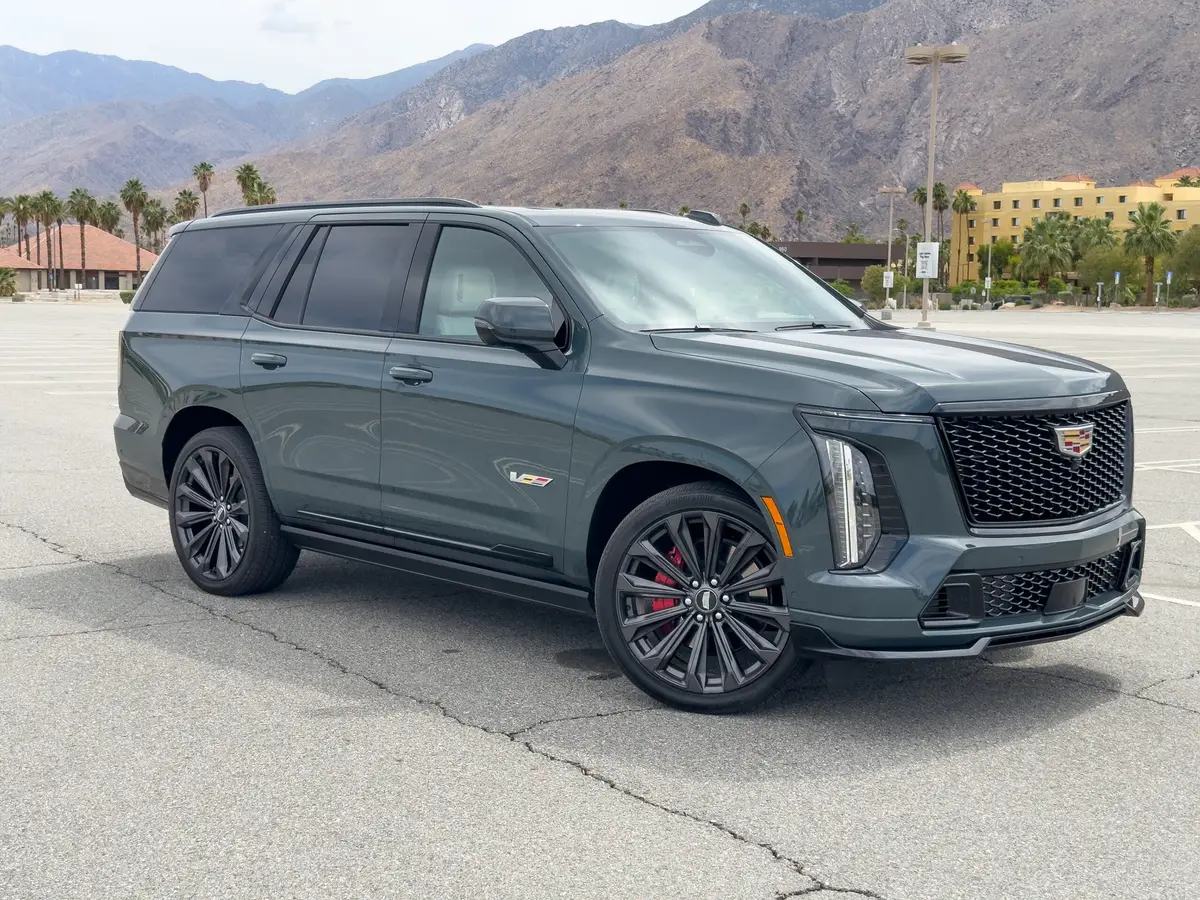
Is the 2025 Cadillac Escalade V a Good Luxury SUV?
The styling updates look good, and the new screens are impressive, but the 2025 Escalade takes a step back in terms of interior plastics and trim quality, which don’t keep pace with its ever-increasing price tag.
How Does the 2025 Cadillac Escalade V Compare to Other Luxury SUVs?
The Escalade V is loud and brash, making a scene wherever it goes, while its competitors tend to be more subdued, focused more on luxury trimmings than boisterousness. The Cadillac’s full-size space and immense power, however, can’t be had in any foreign-brand competitor.
Cadillac’s full-size Escalade luxury SUV has long been considered the ultimate American luxury vehicle. It has a serious following among many different demographics, and yes, while you’re as likely to see one cruising Rodeo Drive as you are to see one arriving as your Uber Black ride-share car, it still commands a premium price and sells in good numbers.
Related: All-Electric 2026 Cadillac Escalade IQL Follows in the (Longer) Footsteps of the ESV
For 2025, there’s a new Escalade sharing showroom space with the traditional gas-powered model: An all-electric behemoth called the Escalade IQ, which is even larger, more expensive and more powerful than the OG Escalade. That also meant it was time to update the gas version, so the traditional ‘Slade gets a refreshed look and an all-new interior, the latter of which is partially shared with the IQ to help spread costs around. But is the new, updated Escalade worthy of the kudos the last one received for its groundbreaking interior tech, legit luxury trimmings and available eye-popping V performance model? We spent a week with a new ‘25 Escalade V in and around the desert community of Palm Springs, Calif., hauling around a truckful of friends to find out.







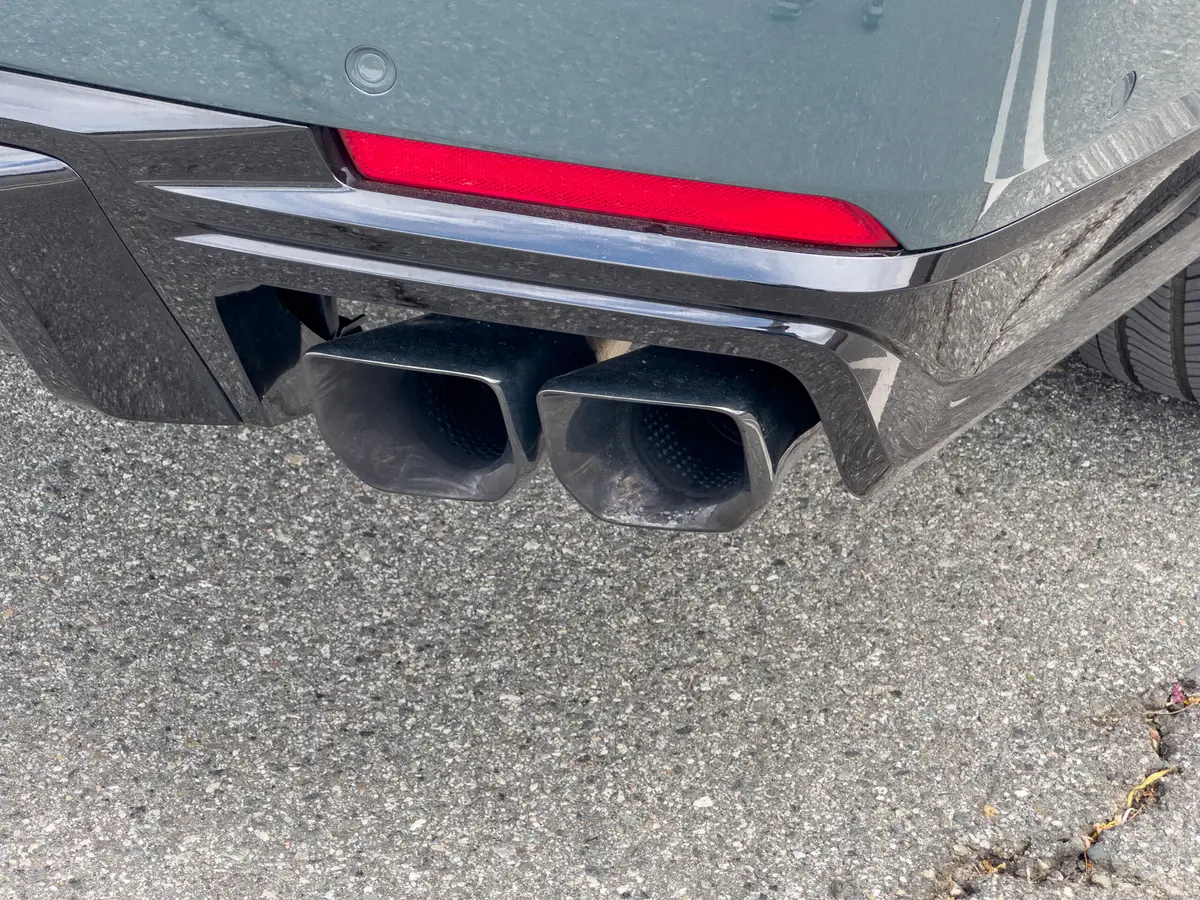



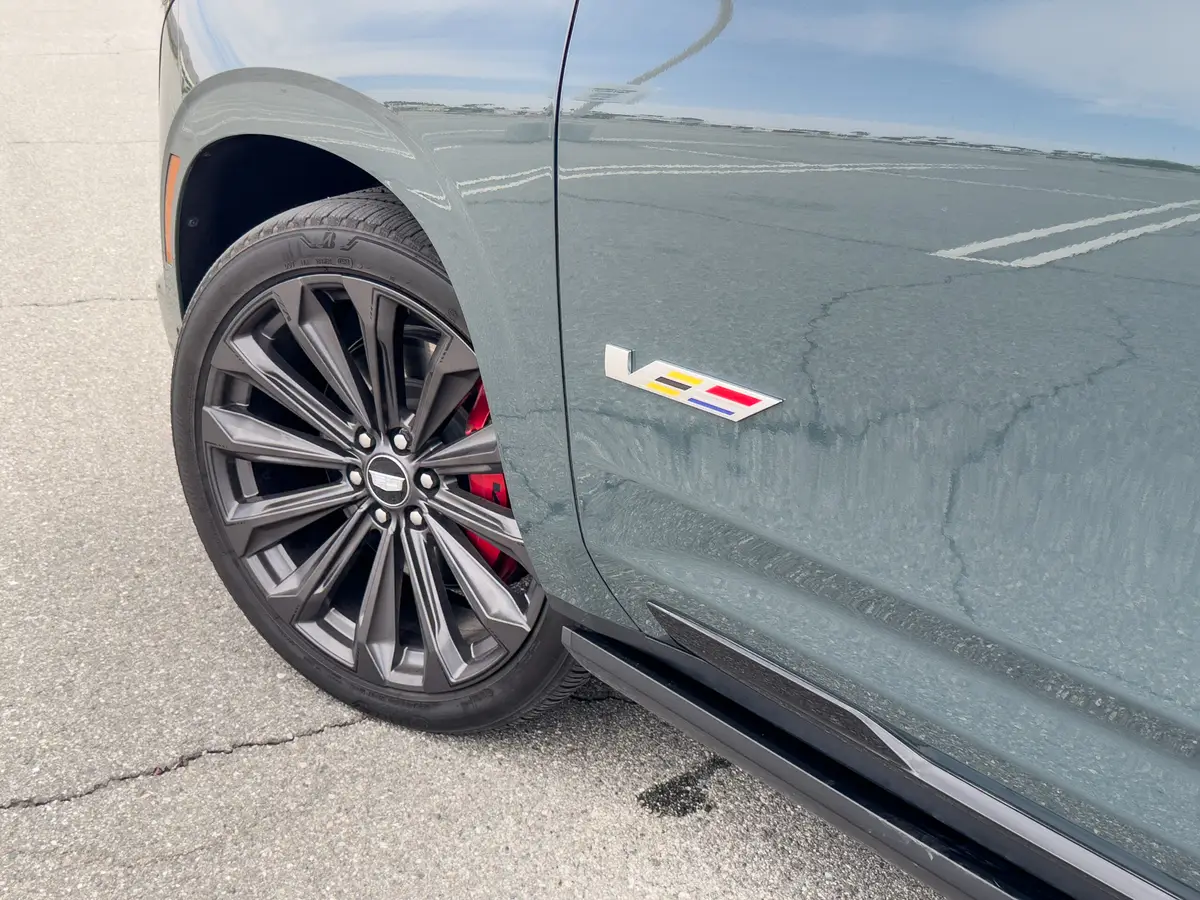


















How Much Does a 2025 Cadillac Escalade Cost?
You can have an Escalade in a number of configurations, including the regular Escalade and an extended-length Escalade ESV. Both are available with rear- or four-wheel drive in several trim levels, and there’s an all-wheel-drive “V” high-performance version at the top of the lineup. All prices below are for a standard-length RWD model (with the exception of the AWD Escalade V). Adding 4WD to the variants listed below ups the price by $3,000, and opting for the longer ESV version adds another $3,000. All prices include a $2,195 delivery fee:
- Luxury: $90,295
- Premium Luxury: $99,495
- Premium Luxury Platinum: $119,095
- Sport: $100,095
- Sport Platinum: $119,595
- V (AWD): $164,695
Like most Cadillacs, the Escalade offers two styling paths for buyers: Luxury and Sport. Luxury comes with more blingy chrome trim, while Sport swaps the shiny chrome trim and bright wheels for glossy black adornments. Looks vary inside, as well, with the Luxury trims getting more shiny bits and the Sport getting racier carbon-oriented appliques. Cadillac’s Magnetic Ride Control suspension is standard on all models except the base Luxury trim, and all non-V models are powered by a 6.2-liter V-8 that makes 420 horsepower and 460 pounds-feet of torque, mated to a 10-speed automatic transmission.
My test vehicle, however, was off in its own category: The Escalade V is the top trim and features a supercharged 6.2-liter V-8 making 682 hp and 653 pounds-feet of torque. It also brings some modified styling, special exhaust, a genuine carbon-fiber-trimmed interior, a ton of standard equipment, and a price tag as massive as its power output; as tested, the Escalade V I drove stickered at $165,320. That’s a stunning price increase over the other trim levels — though a fully loaded 4WD Sport Platinum and its own performance package and upgrades nearly halves that gap, from around $45,000 to about $22,000. So is it worth it? And is the new Escalade’s screen-heavy, touch-sensitive interior a step in the right direction?
Related Video:
New Style Inside and Out
One element common to all 2025 Escalades is new styling inside and out, bringing the look of this big, gas-powered luxury SUV in line with Cadillac’s electric SUV lineup. On the outside, a new front end carries on the look of the “-iq” SUVs (Optiq, Lyriq, Vistiq and Escalade IQ). It’s a sleeker, more streamlined look than before, but it still incorporates the signature vertical light pipes that many people now associate with the Cadillac brand. Unlike an electric SUV, however, the gas-powered Escalade needs a proper grille to allow airflow to that big 6.2-liter engine, so you get mesh instead of a plastic panel full of dancing LEDs. The V blacks out the trim for a dark chrome effect that looks menacing; it worked very nicely with my test vehicle’s extra-cost Aegean Stone gray-green paint. The V rides on huge 24-inch wheels and tires, and there are some subtle “V” badges, as well, but the cosmetic differences between the V and the rest of the Escalade lineup aren’t huge. And that’s pretty much how Cadillac wants it; this is meant to be more of a sleeper performance model — until you fire up that engine, at which point sleep is not possible. Not for you, not for your neighbors, not for anyone nearby. More on that in a minute.
It’s Not How You Feel, It’s How You Look
The Escalade’s new interior is also a bit of a departure from the prior model’s cabin, sharing a number of parts and pieces with the electric Escalade IQ. It starts with the 55-inch door-to-door screen, which is actually three screens side-by-side under a single cover panel. The display in front of the driver is reconfigurable, but much of it is obscured by the Escalade’s round steering wheel — a curious decision, given the Lincoln Navigator and many other vehicles with big screens like this have gone with a flattened ovoid “squircle” wheel to allow for better screen visibility. GM has such steering wheels (there’s one in the Chevrolet Corvette), but the Escalade sticks with the round wheel. It limits the gee-whiz factor of the impressive digital display.



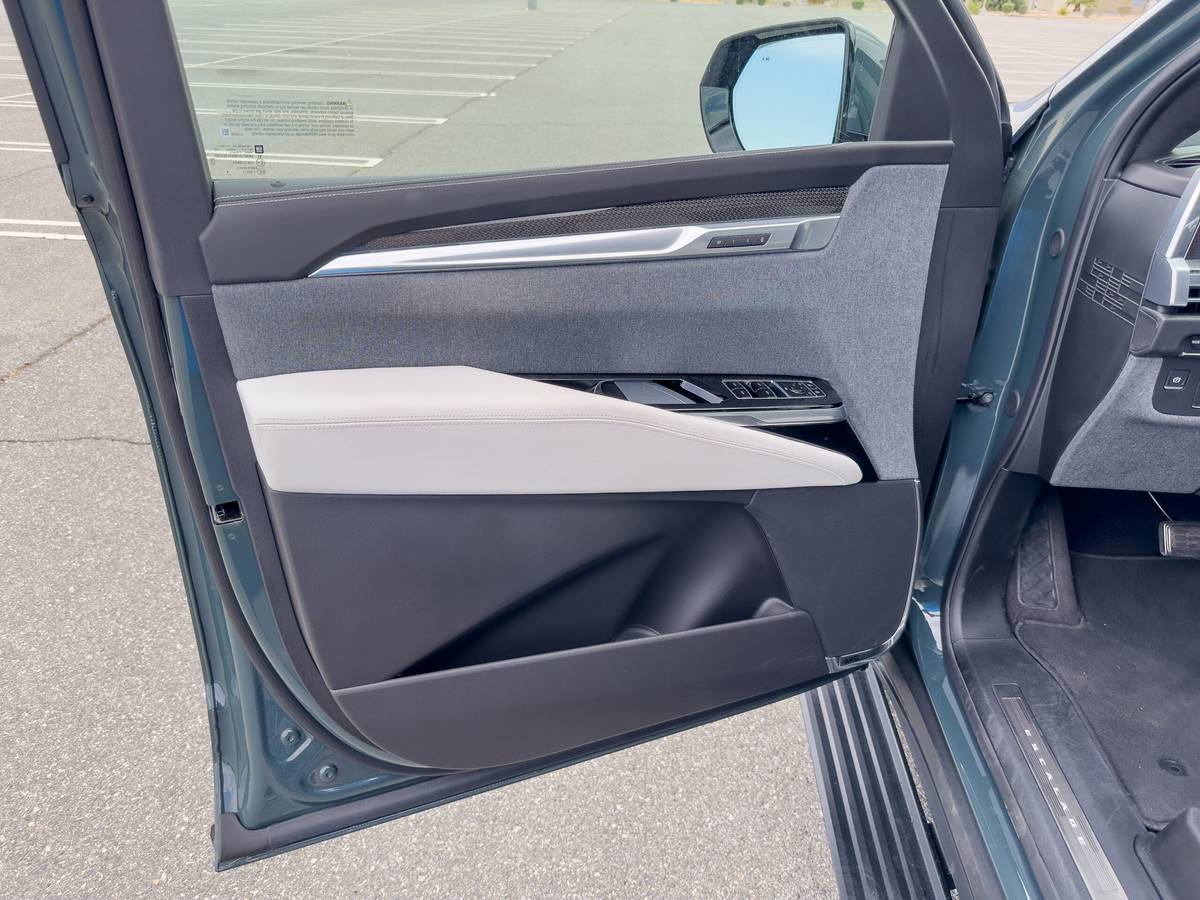

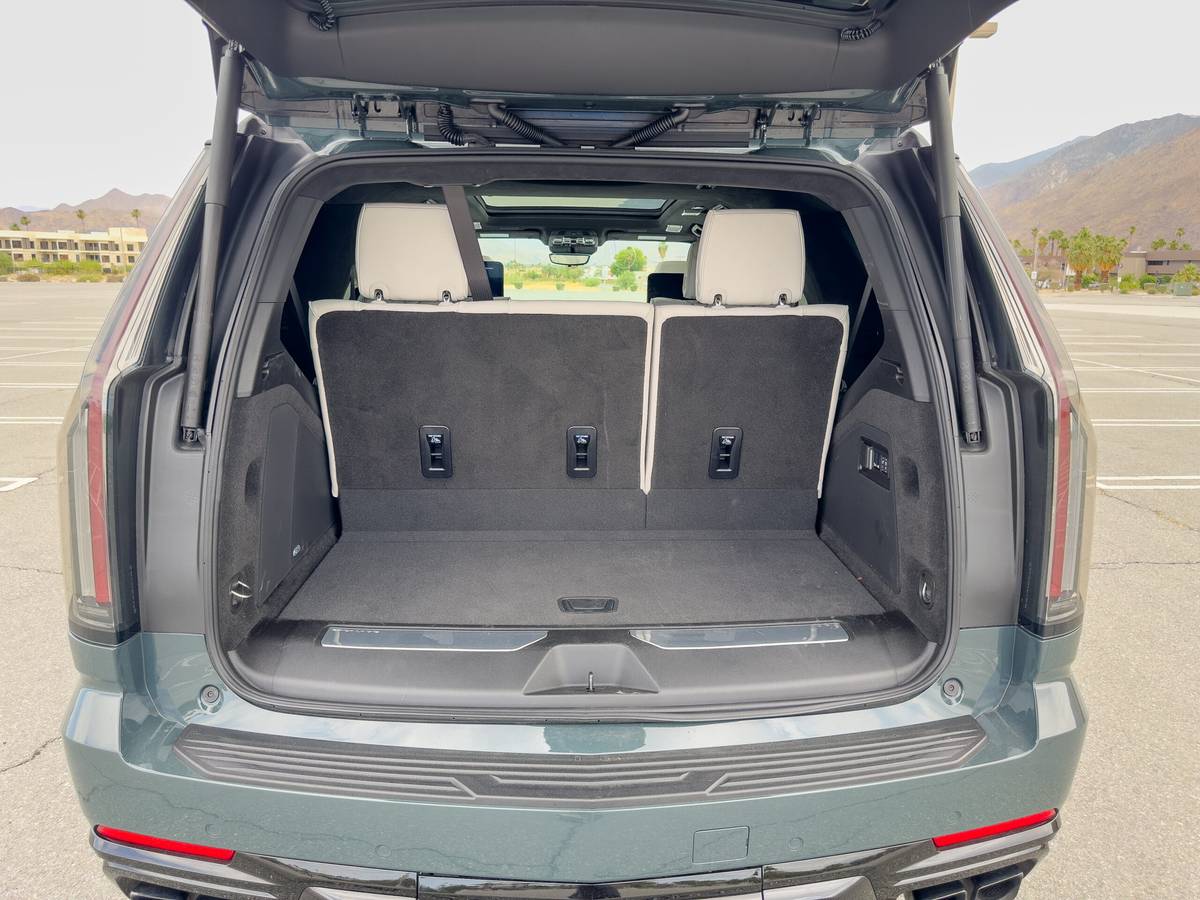



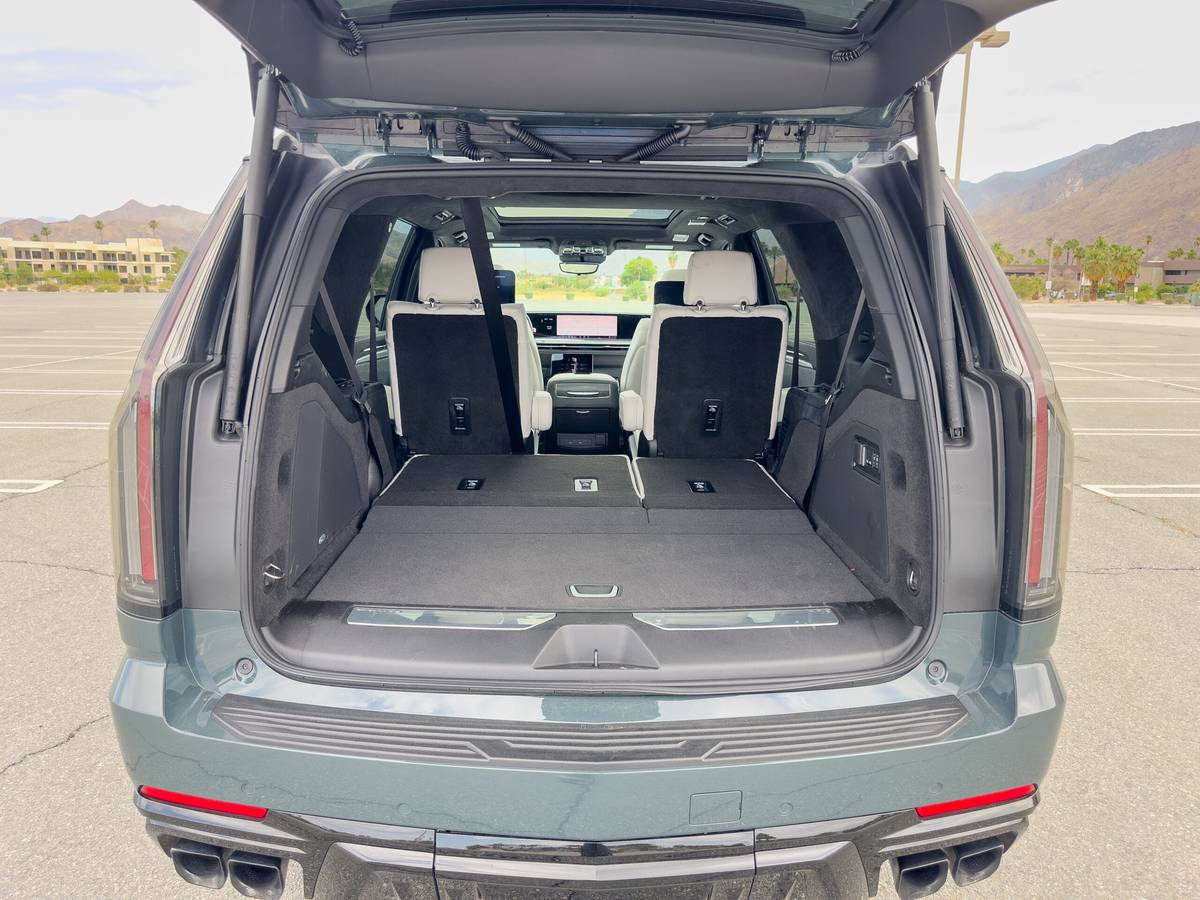
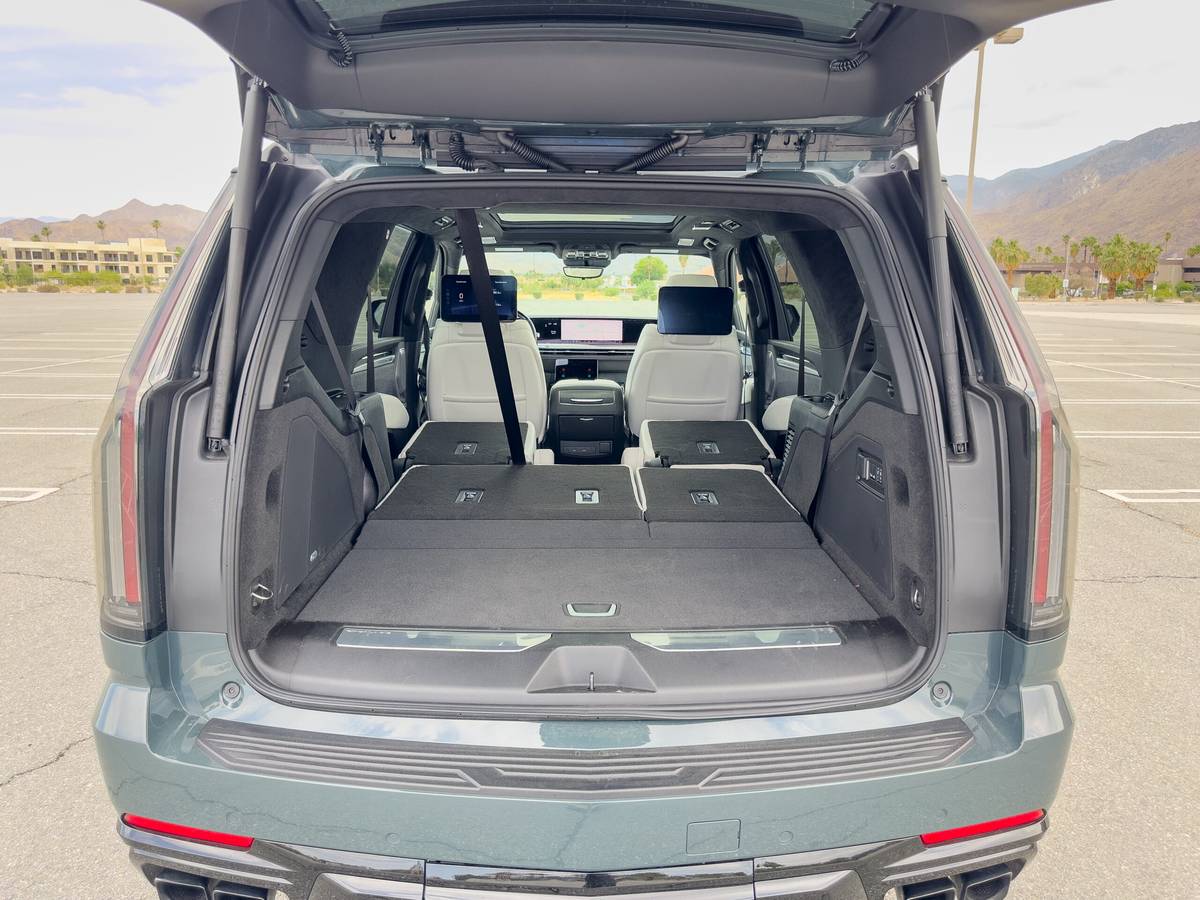
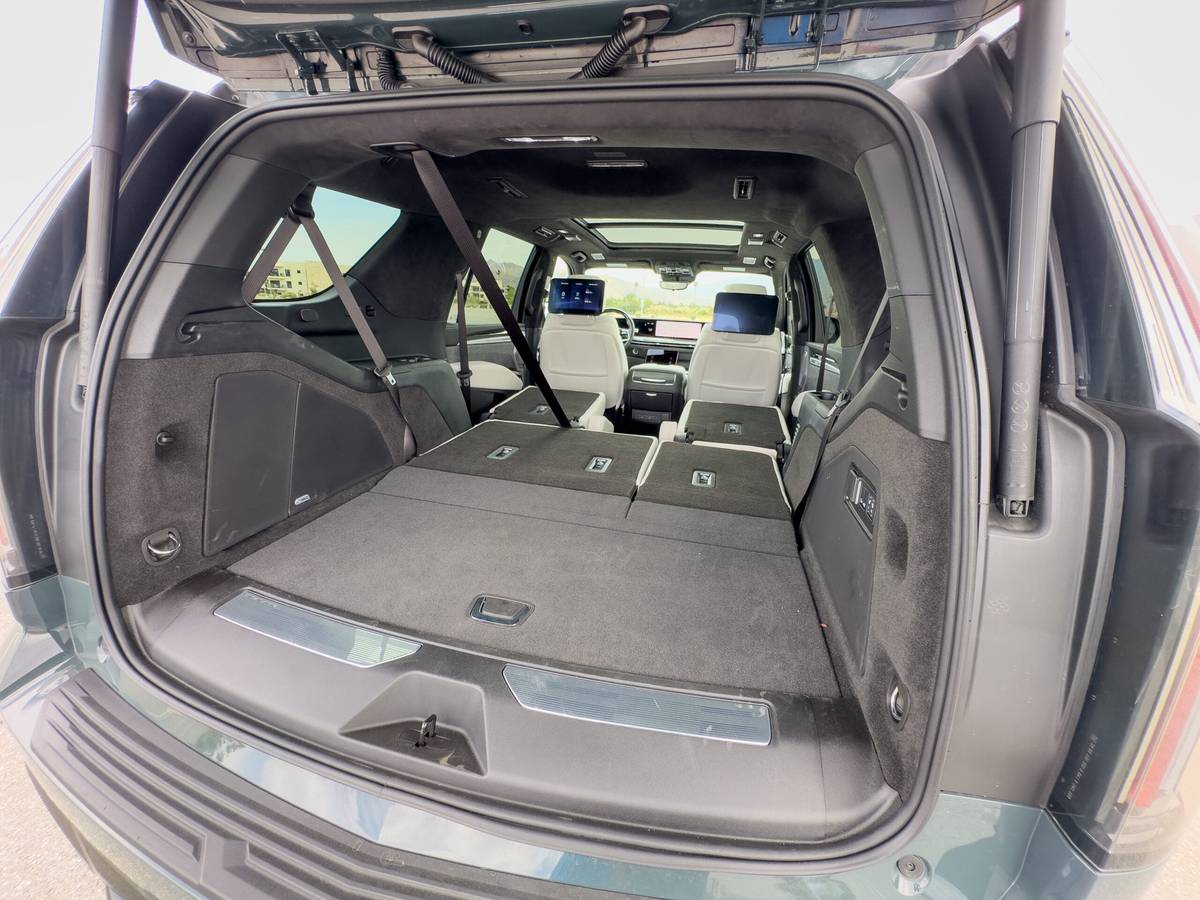
















Next to the gauge display is a center touchscreen running the latest Google Built-In operating system, for better or worse. At least it still incorporates Apple CarPlay — a departure from the electric Cadillacs, which GM has decided aren’t allowed to have it. It’s clear and easy to use, but the reliance on Google Built-In — which requires an active data connection to the cloud for all its functions to work — can be problematic if you live somewhere that doesn’t have solid cell data coverage. You won’t, for instance, be able to change the satellite radio station by voice command if you’re driving through Joshua Tree National Park; you’ll have to do it manually. I miss the old systems that did everything without the need for cloud computing.
Below the central touchscreen is a lower touchscreen that houses climate controls, as well as a host of options and functions, such as the Escalade’s optional automatic opening and closing doors. The climate controls might be the more frustrating function to have in this screen, as touch-sensitive climate controls never really work properly. The icons are at least big and mostly well defined, so it’s a step up from what companies like BMW are trying to do. Finally, on the far right side of the dash is a passenger screen that, when the vehicle is in motion, is not visible to the driver but clear to the front passenger. It features everything from a web browser to several ancillary controls.
The display is impressive, but Cadillac is in danger of falling into the same trap as European luxury brands, confusing screens and gadgets for proper luxury trimmings. While the screens and tech got upgraded for 2025, the Escalade’s interior materials quality took a step backward: Everything in the Escalade looks great but feels thin, hollow and cheap. Panels creak, and tapping on surfaces resonates below the panel. Nothing inside feels expensive, which is a problem for a vehicle costing $165,000. At least the seats are comfortable and decently spacious in every position. Their power-folding mechanism makes getting into the third row a breeze, enabling us to tote seven people around Palm Springs comfortably and with ease.
What the Escalade V is not lacking: amenities. From the power-opening-and-closing doors to a refrigerated center console cooler to a 38-speaker AKG Studio Reference sound system, the Escalade V is absolutely packed with interesting and useful tech. There’s also a full-color head-up display, night vision camera and even augmented-reality displays when you use the Google-based navigation system. The powered doors feel heavy, but when you learn how to use them properly (just give the handle a squeeze and step back), they become second nature. Standard Super Cruise hands-free cruise control works as well in the Escalade V as it does everywhere else I’ve tried it. But while the V is loaded with useful goodies, its best feature is actually under the hood.




















‘All Ate Up With Motor’
Every other gas-powered Escalade comes with the aforementioned 6.2-liter V-8, but for the V, Cadillac has slapped a supercharger on it and tuned it to make huge power — and huge noise. Every time you start the V, everyone nearby will know it. Do it at a valet stand, and everyone waiting jumps. Do it at 5 a.m. to go to the gym, and your neighbors will hate you in short order. It’s loud all the time, with that basso profundo rumble permeating the cabin, echoing off buildings, and rattling around canyons — both desert and urban. But it’s not like you don’t know that going in; nobody buying the Escalade V is surprised that it makes a lot of noise — and a lot of speed.
Push the “V” button on the steering wheel to put the SUV into V Mode, and all the various adjustable systems are turned up to their maximum setting. Stomp the accelerator, and the V rears up on its haunches and barrels forward like a charging rhino. It’s astonishingly quick for a vehicle as big as it is; Cadillac says it can go from 0-60 mph in 4.4 seconds, and its big Brembo high-performance front brakes help haul it down from speed just as easily. The regular Escalade is no slouch, but the extra speed and brute force of the V is truly intoxicating to use. Just be prepared for constant stares of annoyance from passersby when doing so.
More From Cars.com:
- 2025 Cadillac Escalade IQ Review: Is Anyone Ready for an Electric Escalade?
- Escalade Escalated: 2025 Cadillac Escalade Price Climbs $5,700
- 2025 Cadillac Escalade Goes All In on Dazzling Screens
- 2025 Cadillac Escalade IQ Is Electric (Boogie Oogie Oogie)
- Cadillac Escalade: Which Should You Buy, 2023 or 2024?
The rest of the Escalade experience is intact, including an astonishingly supple ride delivered by the adaptive air suspension working in concert with Magnetic Ride Control shocks. Nothing you roll over disturbs the comfort of passengers (who will already be a little on edge from the V’s instant acceleration and continuous rumble). Its handling is what you’d expect a huge, heavy three-row luxury SUV like this to deliver — floaty, tippy and not terribly communicative. But then this isn’t a canyon-carver, it’s a battleship meant to blast in a straight line. The MRC and adaptive air suspension help keep things as level as possible, but there’s no disguising all this mass if you really start driving aggressively. Perhaps don’t drive so aggressively and just enjoy all the power and drama instead.
Carrying People and Stuff in Style
Unlike some other luxury SUVs, the Escalade V is still all about being seen, making noise and announcing one’s arrival in grand fashion. Its size allows for easy, comfortable accommodation of seven or eight people (depending on seating configuration) — and by that I mean seven or eight adult-sized people; the third row is not just reserved for children. There’s also plenty of cargo room behind the third row and tons of space if you drop that seat. And if that’s not enough, there’s even more space available if you drop another $3K for an ESV.
But while the Escalade’s pricing is on par with imported luxury brand SUVs, its interior materials are slipping dangerously close to “not worth the money.” This is curious, because lesser Cadillac models — like the new Optiq EV SUV, which costs half as much as an Escalade — have higher-quality cabins with better materials. If this is the flagship SUV for the Cadillac brand, they’d better be careful not to slip any further down that material quality ladder.
Cars.com’s Editorial department is your source for automotive news and reviews. In line with Cars.com’s long-standing ethics policy, editors and reviewers don’t accept gifts or free trips from automakers. The Editorial department is independent of Cars.com’s advertising, sales and sponsored content departments.

Detroit Bureau Chief Aaron Bragman has had over 25 years of experience in the auto industry as a journalist, analyst, purchasing agent and program manager. Bragman grew up around his father’s classic Triumph sports cars (which were all sold and gone when he turned 16, much to his frustration) and comes from a Detroit family where cars put food on tables as much as smiles on faces. Today, he’s a member of the Automotive Press Association and the Midwest Automotive Media Association. His pronouns are he/him, but his adjectives are fat/sassy.
Latest news
